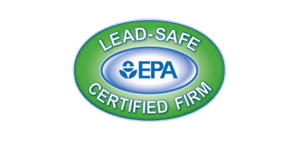Experiencing smoke damage can be a harrowing experience, leaving behind harmful residues and unpleasant odors. Proper clean-up and disposal of items affected by smoke damage are essential for ensuring a safe and effective restoration process. In this comprehensive clean-up guide, we will discuss what items you should consider throwing away after smoke damage and provide you with essential tips to handle the aftermath.
Key Takeaways:
- Smoke damage can leave behind harmful residues and odors that can be difficult to remove.
- Assess the extent of the smoke damage before deciding what to throw away.
- Non-restorable items like mattresses, upholstered furniture, carpets, and drapes should be discarded to prevent further contamination.
- Items with severe smoke odor and damaged electronics and appliances should also be disposed of.
- Salvageable items can be cleaned and restored to minimize losses with the help of professional restoration experts.
Assessing the Extent of Smoke Damage
Before deciding what items to throw away after smoke damage, it’s important to assess the extent of the damage throughout your property. Smoke can travel and penetrate into areas that may not be immediately visible, leaving behind harmful residues and odors.
Begin by inspecting all areas that were affected by smoke, including walls, ceilings, furniture, and personal belongings. Take note of the severity of the smoke damage and whether the items can be salvaged through cleaning or if they need to be disposed of.
Keep in mind that smoke damage can vary in severity depending on the type of fire and the materials that were burned. For instance, a fire in the kitchen may leave behind different types of smoke damage than a fire in the living room.
Here are some key factors to consider when assessing smoke damage:
- Visible soot and smoke stains on surfaces and items
- Discoloration or warping of materials
- Strong smoke odor that persists after cleaning
- Porous materials that have absorbed smoke and are discolored or have a strong odor
- Electronics and appliances that were exposed to smoke
In some cases, the extent of the smoke damage may be beyond your expertise. If you are unsure about the severity of the damage, it’s best to consult with a professional smoke damage restoration company. They can perform a thorough assessment and provide recommendations for the best course of action.
Porous Materials that are Non-Restorable
When it comes to items affected by smoke damage, certain porous materials are more susceptible and may be non-restorable. This includes items such as mattresses, upholstered furniture, carpets, and drapes. The porous nature of these materials allows them to absorb smoke and its residues, making it difficult to fully remove the damage.
In addition, porous materials can also trap odors, making it challenging to eliminate the smoke smell completely. Even with professional cleaning, the odor may persist, impacting the indoor air quality and potentially causing health concerns.
| Items that may be non-restorable due to smoke damage |
|---|
| Mattresses |
| Upholstered furniture |
| Carpets and area rugs |
| Drapes and curtains |
| Clothing and linens |
It is recommended to dispose of these non-restorable items to prevent further contamination and health risks. Consider contacting a professional restoration company to help with the disposal process and ensure that it is done safely and effectively.
Non-restorable porous materials: dispose of to prevent further contamination and health risks.
Items with Severe Smoke Odor
Some items may have a severe smoke odor that can be challenging to remove, even with professional cleaning services. Clothing, linens, and soft furnishings are often porous and can absorb smoke residues, making it difficult to eliminate the odor completely. If you’ve tried all the recommended cleaning methods without success, it’s time to consider discarding these items.
Smoke odor can impact indoor air quality, causing respiratory problems and other health issues. It’s essential to remove the source of the odor to create a safe and healthy environment for you and your family. By discarding heavily contaminated items, you can prevent further odor contamination and protect your health.
To ensure effective odor removal, consider investing in an air purifier or odor-eliminating products recommended by professionals. These products can help neutralize the remaining smoke odor in your home.
Items with Severe Smoke Odor
If you have any items with severe smoke odor, it’s important to handle them with care. Smoke odor can linger even after cleaning and can negatively impact the indoor air quality in your home. Clothing, linens, and soft furnishings are particularly susceptible to smoke odor and may need to be replaced entirely.
When it comes to electronics and appliances, smoke damage can compromise their functionality and pose potential safety hazards. It’s essential to have them inspected by a professional to determine if they are still safe to use. In many cases, it may be necessary to discard and replace these items for safety reasons.
Electrical safety is of utmost importance when it comes to smoke damage. Smoke residues can corrode metal components, leading to potential electrical hazards. It’s crucial to have a qualified electrician inspect your electrical wiring and appliances to ensure they are not damaged and are safe to use.
Assessing Food and Medications
After experiencing smoke damage, it’s essential to assess the safety of food and medications that may have been exposed to smoke. Smoke contaminants can easily permeate food packaging and medication containers, rendering them unsafe for consumption or use.
If you have any perishable food items that were exposed to smoke, it’s recommended to dispose of them immediately. Opened containers, such as jars or bottles, should also be discarded, as smoke particles can easily enter and contaminate the contents.
When it comes to medications, it’s advisable to err on the side of caution. Discard any medications that were exposed to smoke, even if they are still within their expiration date. This is particularly important for medications that are taken orally or inhaled, as smoke residues can be harmful if ingested.
It’s also important to note that medications stored in pillboxes or other containers should be inspected for smoke damage. If the container was open during the smoke damage event, it’s possible that the contents may have been contaminated.
To ensure the safety of your food and medications, it’s recommended to properly store them in airtight containers and away from areas affected by smoke damage. If you are unsure whether an item is safe to consume or use, it’s best to discard it rather than risk potential health hazards.
Salvaging and Cleaning Restorable Items
Not all items affected by smoke damage need to be thrown away. Some items may be salvageable through thorough cleaning and restoration processes. Hard, non-porous surfaces such as glass, metal, and ceramics can often be effectively cleaned and restored. It’s important to consult with professional restoration experts to determine the best course of action for each item.
For example, if your kitchen was affected by smoke damage, your pots, pans, and dishes may be salvageable with proper cleaning. However, it’s important to note that only hard, non-porous surfaces can be cleaned and restored. Porous materials such as plastic and wood may absorb the smoke odor and residue, making them non-restorable.
| Restorable Items | Non-Restorable Items |
|---|---|
| Hard, non-porous surfaces | Porous materials |
| Glass | Plastic |
| Metal | Wood |
| Ceramics | Upholstered furniture |
The cleaning process for restorable items will vary depending on the severity of the smoke damage. In some cases, a thorough wipe-down with a cleaning solution may be enough to remove the smoke odor and residue. In other cases, a more extensive restoration process may be necessary, such as deep cleaning or refinishing.
It’s important to work with a professional restoration company to ensure that all restorable items are properly cleaned and restored. Attempting to clean items yourself can lead to further damage or contamination.
In summary, non-porous, hard surfaces may be salvageable through proper cleaning and restoration processes. Consult with professionals to determine the best course of action and ensure that all restorable items are thoroughly cleaned and restored.
Conclusion
Now that you have a better understanding of what items you should consider throwing away after experiencing smoke damage, you can take the necessary steps to ensure a safe and effective restoration process. Remember to assess the extent of smoke damage in your property before deciding what to throw away and salvage. Non-restorable porous materials and items with severe smoke odor should be prioritized for disposal, while damaged electronics and appliances need to be evaluated for potential safety hazards. Assess food and medications for possible smoke contamination and dispose of them if necessary. Salvageable items can be cleaned and restored to their pre-damage condition. Consult with professionals for advice and assistance throughout the clean-up process to ensure a successful outcome.
FAQ
What items should I consider throwing away after experiencing smoke damage?
After smoke damage, it is recommended to throw away certain items that may be heavily affected by harmful residues and odors. This includes porous materials like mattresses, upholstered furniture, carpets, and drapes, as well as items with severe smoke odor, such as clothing, linens, and soft furnishings.
How can I assess the extent of smoke damage in my property?
To assess smoke damage, thoroughly inspect all areas affected by smoke, including walls, ceilings, furniture, and personal belongings. Take note of the severity of the smoke damage and determine if the items can be salvaged through cleaning or if they need to be disposed of.
What are non-restorable porous materials?
Non-restorable porous materials are items that are more susceptible to smoke damage and may be impossible to fully clean and restore. These materials include mattresses, upholstered furniture, carpets, and drapes. It is recommended to dispose of these items to prevent further contamination.
What should I do with items that have severe smoke odor?
Items with severe smoke odor, such as clothing, linens, and soft furnishings, should be discarded and replaced with new ones. Even after thorough cleaning, the smoke odor may persist and impact the indoor air quality, so it’s better to ensure a fresh and healthy environment.
Can smoke damage affect electronics and appliances?
Yes, smoke damage can compromise the functionality of electronics and appliances, posing potential safety hazards. If electronic devices or appliances have been exposed to smoke, it is crucial to have them inspected by a professional to determine if they are still safe to use. In many cases, it may be necessary to discard and replace these items for safety reasons.
What should I do with food and medications exposed to smoke?
Food and medications exposed to smoke should be discarded to avoid potential health risks. Perishable foods, open containers, and medications that have come into contact with smoke residues should not be consumed or used. It’s important to prioritize safety and dispose of these items when in doubt.
Can any items be salvaged and cleaned after smoke damage?
Yes, not all items affected by smoke damage need to be thrown away. Hard, non-porous surfaces like glass, metal, and ceramics can often be effectively cleaned and restored. Consult with professional restoration experts to determine the best course of action for each item and minimize losses.



